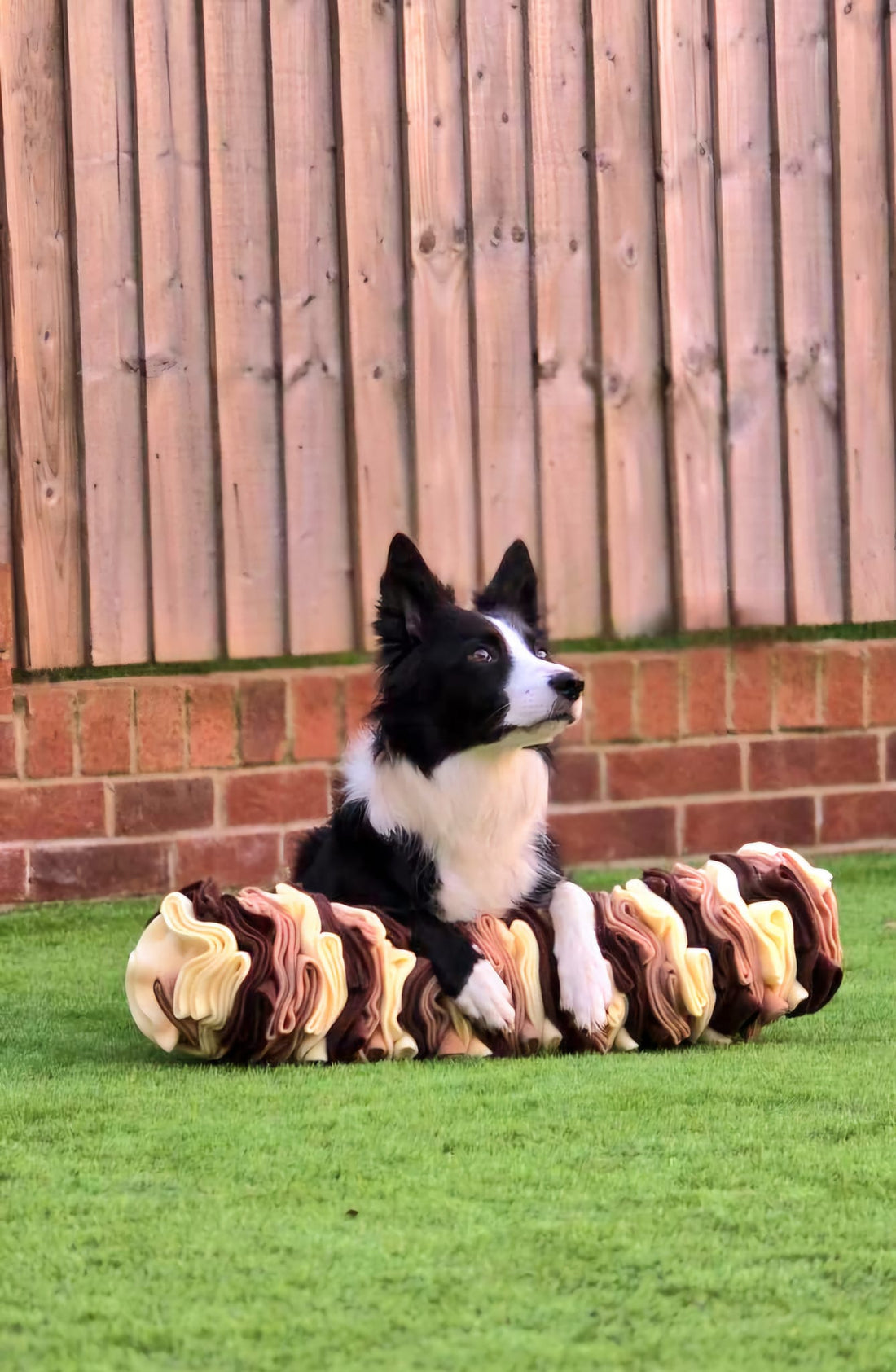Interactive Playtime: Engaging Activities for Mental Stimulation
Interactive playtime, encompassing a variety of engaging activities, is instrumental in providing pets with essential mental stimulation. These activities not only cater to their physical needs but also challenge their intellect, promoting a healthier, happier canine companion. Puzzle toys, for instance, encourage problem-solving skills as pets learn to manipulate objects to retrieve hidden treats. This mental challenge mimics the natural problem-solving behaviors our pets would exhibit in the wild, stimulating their brains and preventing boredom-related behaviors.
Furthermore, interactive play sessions with owners, such as fetch or hide-and-seek, create strong bonds based on trust and communication. Dogs learn to follow commands, enhancing their understanding of human language and reinforcing positive behavior. Additionally, these activities often incorporate the use of various textures, shapes, and sounds, providing sensory stimulation that sharpens their observational skills.
Engaging in interactive playtime also allows pets to release excess energy, reducing anxiety and promoting relaxation. Activities like tug-of-war not only offer physical exercise but also mental engagement as dogs or cats strategise to win the game. Moreover, agility exercises challenge their coordination and focus, encouraging our pets to navigate obstacles with precision, fostering confidence in their abilities.
Mental Stimulation For Your Pet:
Pet Enrichment Snuffle Mats
Snuffle mats, with their vibrant colors and soft textures, serve as more than just a cozy spot for pets to lounge on; they are powerful tools that significantly enhance pet mental stimulation. Designed with countless fabric strips or pockets, these mats mimic the foraging behavior that animals in the wild naturally engage in. When pet owners scatter treats or dry kibble within the mat, pets are compelled to use their keen sense of smell, sharp eyesight, and dexterous paws to explore and find the hidden treasures.
The process of sniffing out treats within the snuffle mat triggers a pet's natural hunting instincts, providing mental and sensory stimulation that is vital for their overall well-being. Engaging in this activity provides a sense of accomplishment for pets, as they actively problem-solve to find the hidden treats, thereby boosting their confidence and self-esteem. It also encourages pets to use their brains, keeping their cognitive functions sharp, especially in older animals.
Furthermore, snuffle mats offer an excellent way for pets to release excess energy. Engaging in a snuffling session can be both physically and mentally exhausting, making it an ideal activity for high-energy pets, such as puppies or active dogs. By stimulating their minds, these mats can also help in reducing anxiety and stress-related behaviors, as pets focus their energy on a rewarding and mentally enriching task.
Pet Enrichment Snuffle Balls
A snuffle ball, designed with various nooks and crannies to hide treats or kibble, is an ingenious tool that significantly enhances a pet's mental stimulation. This interactive toy engages a pet's natural foraging instincts, encouraging them to explore, think, and problem-solve. As a pet rolls, nudges, and paws at the snuffle ball, they are rewarded with hidden treats falling out, which provides a positive reinforcement for their efforts. This process not only keeps them physically active but also mentally sharp. The act of searching for treats inside the ball mimics the thrill of hunting for food in the wild, tapping into their primal instincts.
Moreover, the snuffle ball can be adjusted in difficulty, making it suitable for pets of different intelligence levels and ages. For beginners, larger treats can be used, making it easier for them to find the rewards. For more advanced pets, smaller treats or even puzzle-shaped treats can be hidden deeper within the ball's crevices, challenging them to employ various problem-solving techniques.
Additionally, the snuffle ball provides a sense of accomplishment and satisfaction for pets when they successfully extract treats from it. This positive experience not only boosts their confidence but also reinforces the idea that mental engagement is rewarding, encouraging them to seek out more mentally stimulating activities in the future.
Hide and Seek
Hide and seek can be a highly beneficial and engaging activity for our pets, providing mental stimulation, physical exercise and strengthening the bond between the pet and its owner.
When a dog participates in a game of hide and seek, it activates their natural instincts, honing their sense of smell and sharpening their problem-solving skills. Dogs have an incredible olfactory sense, and searching for a hidden person or object allows them to utilise this skill, giving them a sense of accomplishment when they find the hidden target.
Agility Training
Agility training offers numerous benefits to dogs, both physically and mentally. Engaging in agility exercises provides an excellent outlet for their boundless energy, promoting cardiovascular health, endurance, and muscle tone.
The various obstacles in agility courses, such as tunnels, jumps, and weave poles, encourage dogs to develop their coordination, balance, and overall agility. This physical activity helps in maintaining a healthy weight, reducing the risk of obesity and related health issues. Moreover, agility training serves as mental stimulation, requiring dogs to focus, follow commands, and solve problems in a dynamic environment. As they navigate the course, they learn to make quick decisions, enhancing their cognitive abilities. The training also boosts their confidence and self-esteem as they successfully conquer challenges.
Frozen Treats
Frozen treats can also be a useful tool in training and behavior management. They can be used as rewards for good behavior, making training sessions more enjoyable for pets and encouraging them to learn new commands and tricks. The positive association with frozen treats can reinforce positive behavior, making it easier for pet owners to train their pets effectively.
Moreover, frozen treats can provide mental stimulation. Dogs, like humans, can get bored, and providing them with a frozen treat can keep them mentally engaged and prevent boredom-related behavioral problems.
Training Techniques: Building Trust and Communication
Training techniques are instrumental in building trust and enhancing communication between dogs and their owners. Positive reinforcement methods, such as rewarding good behavior with treats or praise, create a positive association for the dog, making them more receptive to learning. When a dog understands that certain actions lead to positive outcomes, they are more likely to trust the trainer and follow commands willingly. Consistency is also key; dogs thrive on routine and predictability. When commands and expectations remain consistent, dogs learn to trust that their actions will lead to predictable consequences, fostering a sense of security and trust in their owners.
Additionally, training techniques that focus on clear and concise communication are crucial. Dogs respond well to verbal cues, body language, and tone of voice. Using a calm, firm voice and clear gestures helps dogs understand what is expected of them. Timing is equally important; rewarding or correcting a behavior immediately helps dogs connect their actions with the consequences, reinforcing the communication loop.
Building trust through training also involves understanding and respecting a dog's limitations. Each dog is unique, with different temperaments and learning speeds. Patient, gentle training methods acknowledge these differences and allow the dog to learn at its own pace. Harsh punishment or fear-based techniques erode trust and can lead to anxiety and aggression.
Positive reinforcement-based training not only builds trust but also strengthens the bond between dogs and their owners. Dogs learn to associate their owner's presence with positive experiences, enhancing the overall relationship. Trust and communication are the foundation of a strong human-canine connection, and employing effective, respectful training techniques is key to nurturing this bond, creating a harmonious and happy partnership.
Conclusion
In conclusion, interactive playtime stands as a cornerstone in enhancing the mental and physical well-being of our beloved pets. Engaging activities like puzzle toys, hide and seek, agility training, and frozen treats provide more than just entertainment; they stimulate our pets' minds, prevent boredom-related behaviors, and foster physical fitness.
These activities offer a dual benefit, addressing both the intellectual and physical needs of our animal companions. Furthermore, training techniques play a pivotal role in this equation, serving as the bridge that builds trust and effective communication between pets and their owners. Positive reinforcement methods, consistency, clear communication, and understanding of individual differences form the basis of a strong human-canine relationship. By embracing these principles, we not only enrich the lives of our pets but also create a bond built on mutual respect, trust, and love, ensuring a harmonious and fulfilling companionship for both parties involved.

